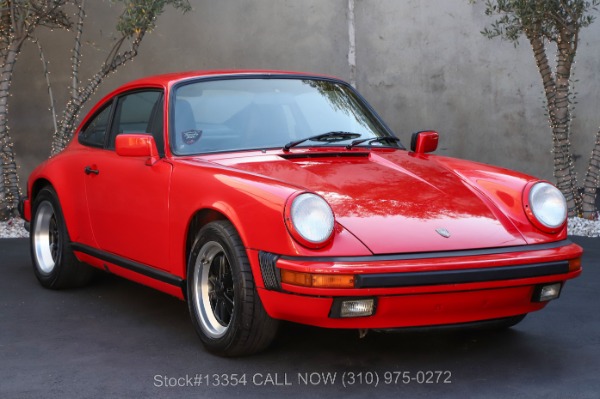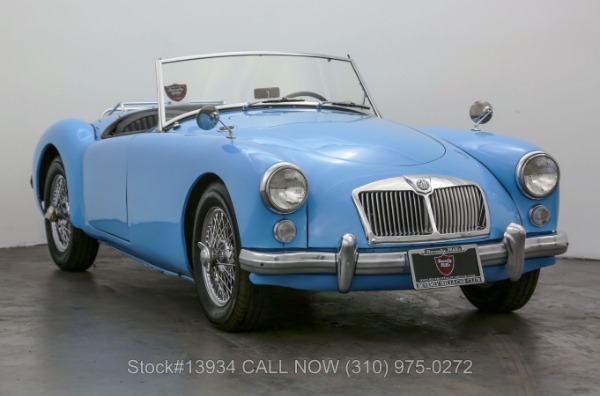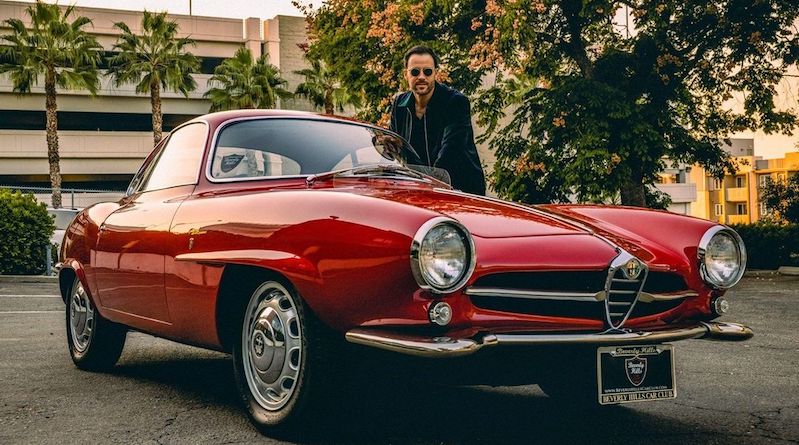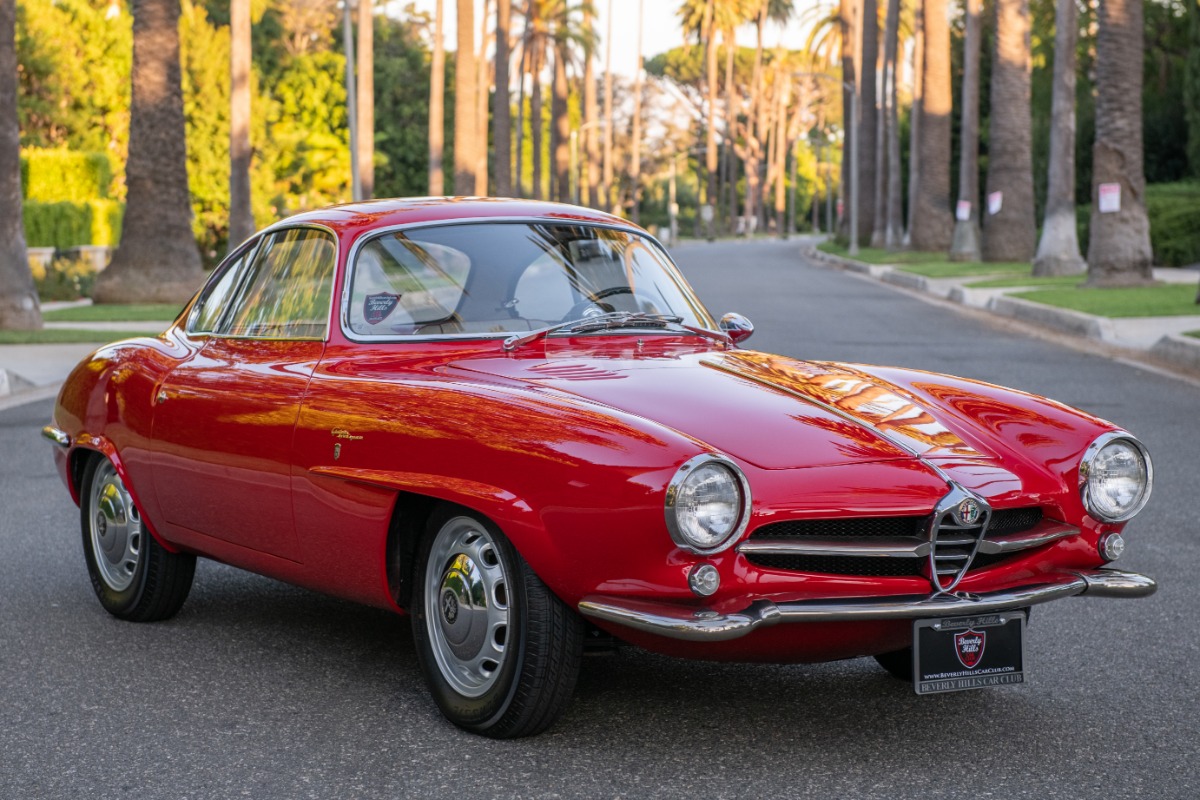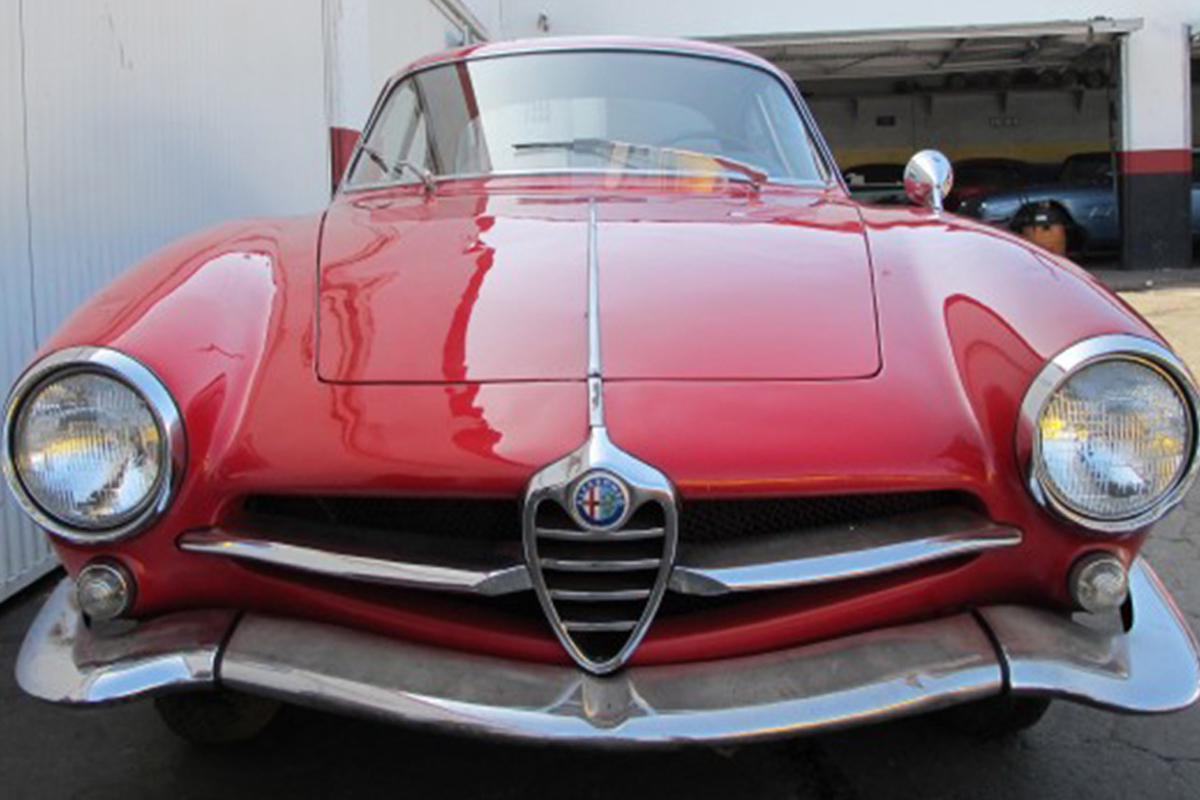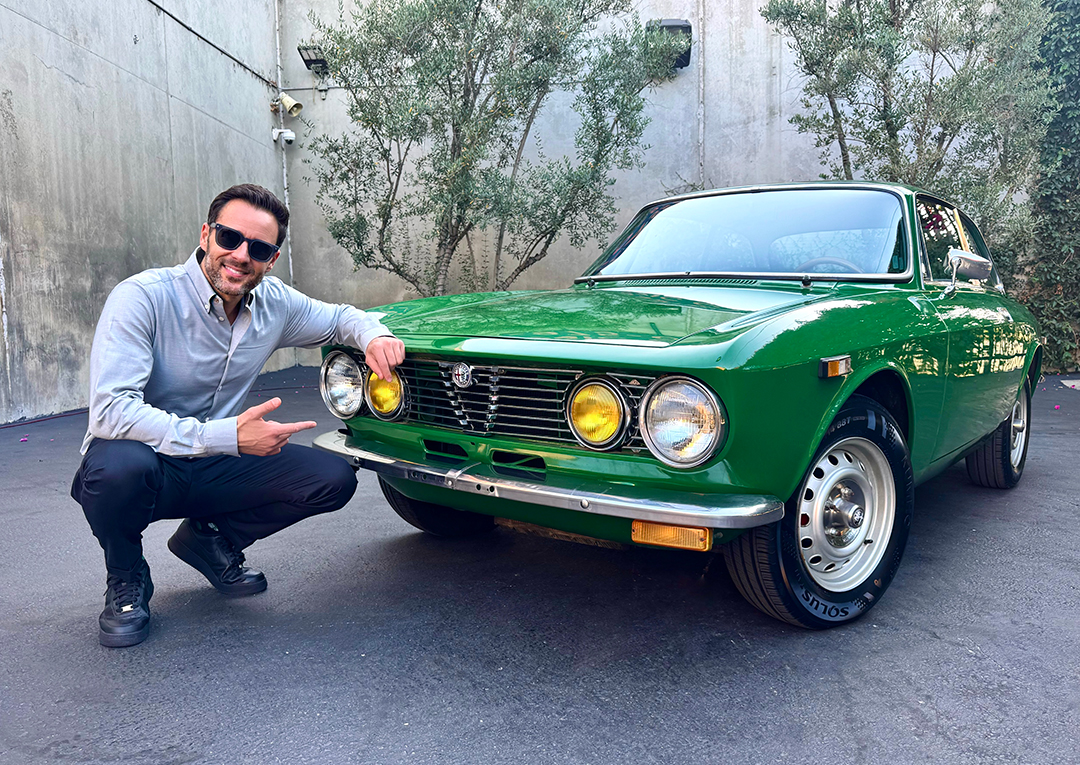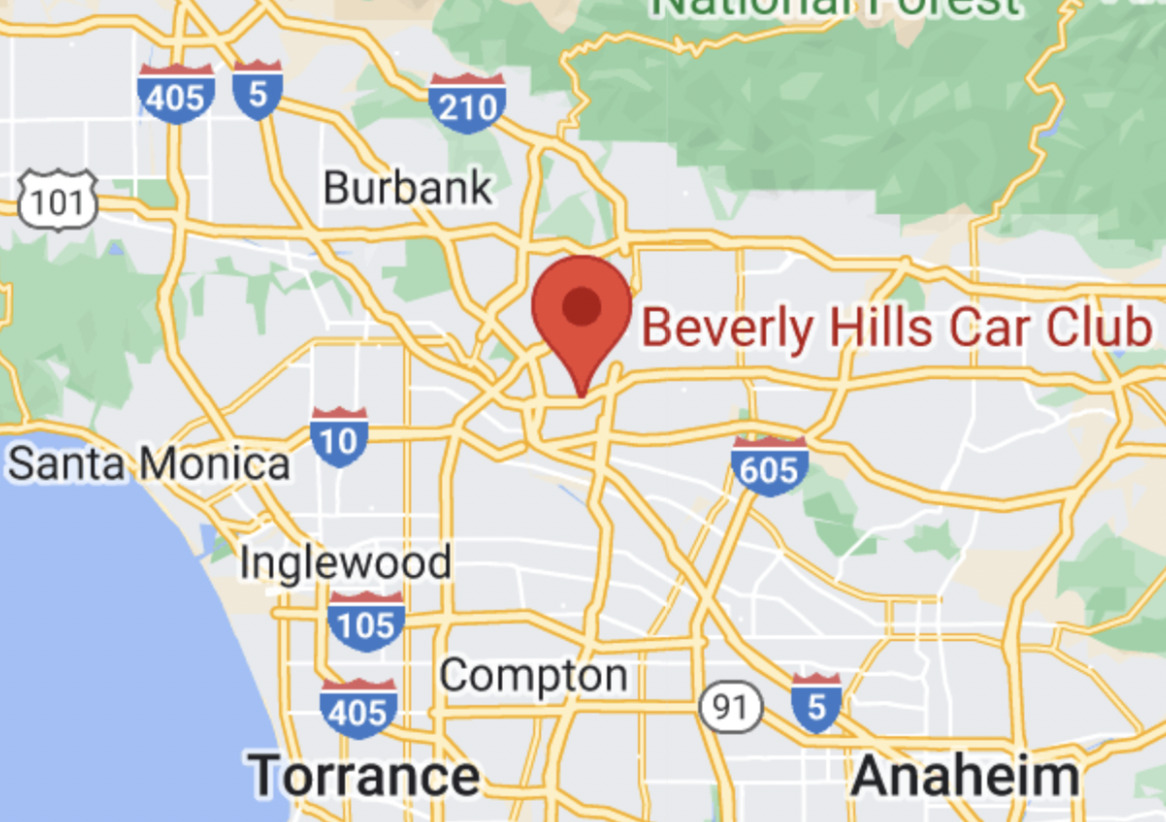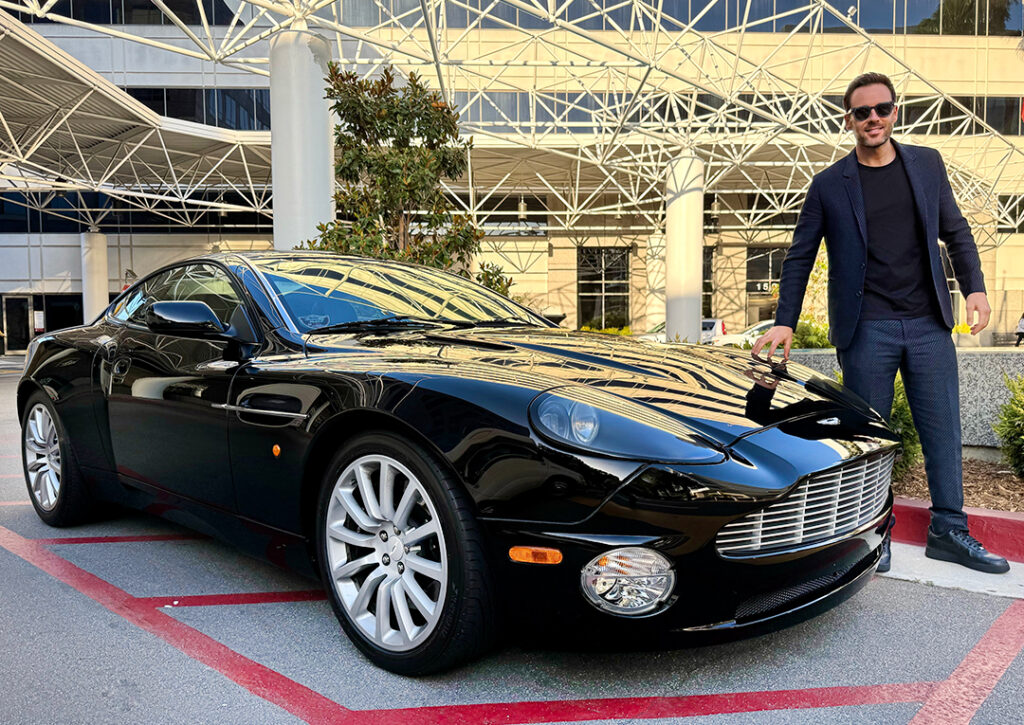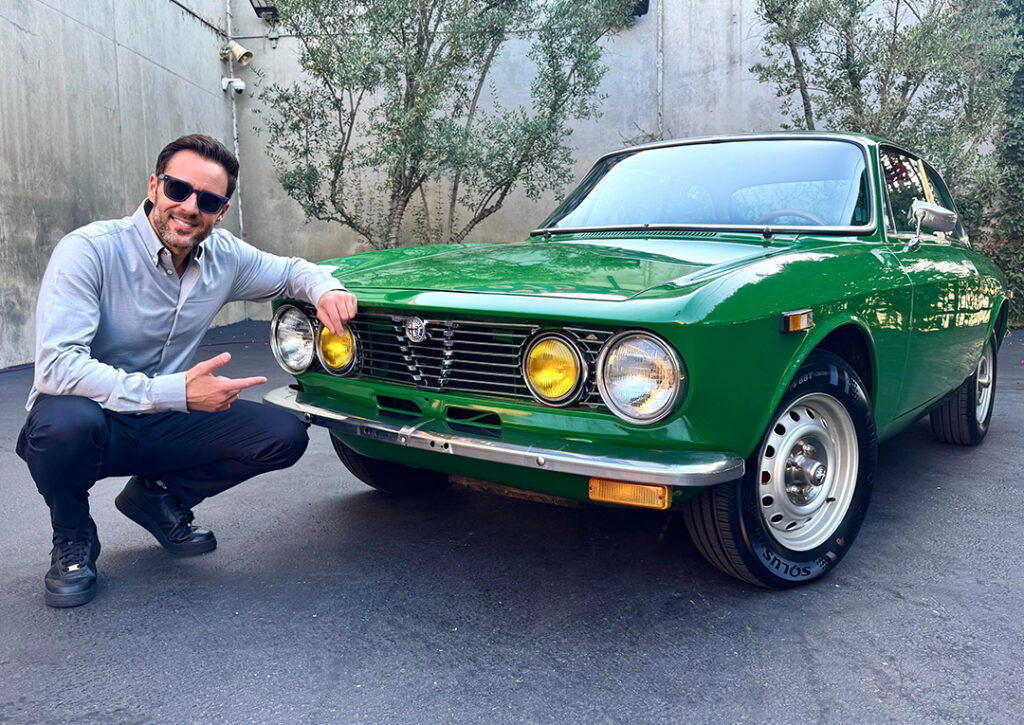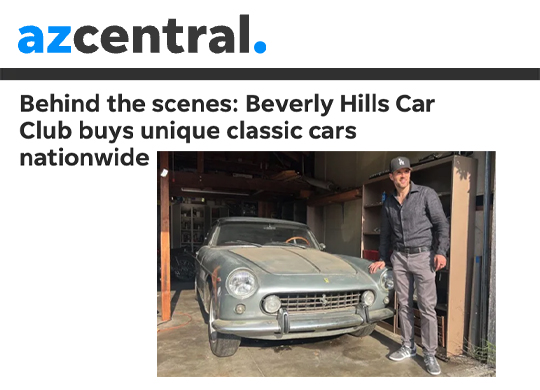 0
0
CLASSIC ALFA ROMEO BUYERS & SELLERS TIPS
If you’ve been thinking about adding a classic Alfa Romeo to your garage but want to ensure you are prepared for the buying process, you’ve come to the right place to learn the valuable classic Alfa Romeo Buyer’s Tips you need to be successful. Whether you’re in search of a classic Alfa Romeo 1900 for restoration, a Giulietta Sprint Speciale in mint-condition or one of the first Alfa Romeo 6C 2500 touring cars, The Beverly Hills Car Club looks forward to sharing their knowledge and expertise with you.
With that being said, let’s take a look at some of the classic Alfa Romeo Buyer’s Tips that The Beverly Hills Car Club has learned over their years of experience in the classic car marketplace.
What’s The Difference: Why We Love Classic Alfa Romeo
-
Rust Requires Further Inspection: While a bubble or two of rust on a quarter panel may not deter you from purchasing a classic Alfa Romeo, if you can see through the trunk and floors or the sides are eaten up, be sure you consider the cost it will take you to repair and restore the classic. Classic Alfa Romeos are plagued by rust, yet there comes a point when your money is better spent finding a car in better condition. Of course, this all depends on the level of restoration you’re willing to take on.
-
Always Check the Numbers: As with most classics, numbers-matching cars are typically the most valuable. This means the car’s engine, transmission and chassis numbers all match up to the car’s VIN number or historical records. Unsure of where to look? An Alfa Romeo specialist or mechanic can assist you in locating these numbers.
-
Lower Production Numbers and Mileage: If you’re thinking about buying a classic Alfa Romeo for investment purposes, focus on models with low production numbers like the Alfa Romeo Giulietta Sprint Speciale or the early 6C 2500 examples. Low production numbers limit availability and thus increase demand and value. Similarly, cars with low mileage and a good body are favored over those that have seen excessive use.
-
Determine Your Use: If you’re going to be using a classic Alfa Romeo as your daily driver, there is no need to find a mint-condition, show-quality example. If you’re thinking about restoring an Alfa Romeo, finding one with a quality body would take priority over one with your favorite paint color. Narrowing down your use will help you narrow down your search.
-
Inspect and Appraise: As with all big purchases, it is best to have a professional inspect the condition and value of your potential purchase. Look for professionals that specialize in Alfa Romeo classics.
Learn more about these classic Alfa Romeo automobiles:
What’s The Difference: Why We Love Classic Alfa Romeo
A combination of factors makes Alfa Romeo ownership significantly more expensive than maintaining comparable British sports cars like MGB-GTs or Austin-Healey 3000s, where parts availability, mechanic familiarity, and simpler systems keep costs more manageable.
1. Specialized Parts Scarcity Alfa Romeo used many proprietary components that weren’t shared with other manufacturers. Unlike British sports cars that often used Lucas electrical parts or SU carburettors available across multiple marques, Alfa’s unique Spica fuel injection systems, Weber carburettors with specific jetting, and proprietary electrical components are increasingly rare and expensive to source.
2. Complex Twin Cam Engine Servicing The twin overhead cam design requires specialized knowledge and tools that many mechanics lack. Timing belt replacement demands precise alignment procedures, and the interference engine design means catastrophic damage if done incorrectly. Compare this to simpler pushrod engines in Austin-Healeys or even Jaguar’s XK engines, which more mechanics can service confidently.
3. Italian Manufacturing Tolerances Alfa Romeo parts were often manufactured to tighter tolerances than British contemporaries, meaning replacement parts must meet exact specifications. Generic or “close enough” parts that might work on British cars often won’t function properly on Alfas, forcing owners to source expensive OEM or precisely manufactured reproduction parts.
4. Electrical System Complexity The sophisticated electrical systems, particularly in later 1960s models, used proprietary Italian components that are notoriously difficult to troubleshoot and replace. Unlike the relatively simple electrical systems in most British sports cars, Alfa’s more advanced circuits require specialized diagnostic knowledge and often complete harness replacement.
5. Body Panel Replacement Costs Alfa Romeo’s complex curved body panels, especially on Pininfarina-designed models, are extremely expensive to reproduce or repair. The intricate stamping dies were destroyed decades ago, making new panels cost 3-4 times more than equivalent panels for more common British or German cars with simpler body shapes.
6. Specialized Labor Requirements Finding mechanics who understand Alfa Romeo’s unique engineering quirks is increasingly difficult. Spica fuel injection system repair, for instance, requires specialized knowledge that commands premium hourly rates ($150-200+ per hour) compared to standard classic car mechanics ($80-120 per hour) who can work on simpler British carburetted systems.
7. Transmission and Differential Complexity The sophisticated transaxle designs in many Alfas require specialized rebuilding techniques and tools. Unlike the simple separate transmission and differential setups in British sports cars, Alfa’s integrated units demand expensive specialized rebuild procedures that few shops can perform competently.
8. Cooling System Peculiarities Alfa Romeo’s cooling systems often used specific thermostats, water pumps, and radiator designs that can’t be easily substituted. The precise engineering means using incorrect components leads to overheating issues, forcing owners to source expensive OEM parts rather than using generic alternatives that work fine on British cars.
9. Brake System Specifications The advanced brake systems, particularly on later models with servo assistance, used proprietary Italian components that are extremely expensive to rebuild or replace. Brake servo units and master cylinders require specialized seals and internal components that cost significantly more than equivalent British Girling or Lockheed systems.
10. Documentation and Knowledge Gap Technical documentation for proper repair procedures is often in Italian and poorly translated, making DIY repairs more difficult. Unlike British cars with extensive aftermarket support and readily available manuals, Alfa Romeo repairs often require consulting expensive specialists or obtaining rare factory documentation, adding significant cost to any major service or restoration project.
Why Choose Beverly Hills Car Club?
Selling your cherished Alfa shouldn’t be stressful. When you choose Beverly Hills Car Club, you partner with experienced professionals who value your car and your time. Here’s why we are the preferred choice for countless classic car owners:
- We Are Alfa Romeo Experts: With 20+ years focused on classic Alfas, we know these cars inside and out and understand its current market value.
- Immediate Payment: We offer fair prices and provide immediate payment upon agreement. No waiting for auction results or uncertain private buyers.
- Immediate Nationwide Pickup: We handle all logistics, arranging prompt and professional pickup from anywhere in the US at our expense.
- We Buy “As-Is” in ANY Condition: From concours to project cars, we buy them all. Don’t worry about costly pre-sale repairs.
- Transparent & Public: We are a well-established, highly visible dealership with a strong online presence. You know exactly who you are dealing with – no anonymous buyers.
- No Hidden Fees: Unlike auctions, there are no seller’s commissions or other unexpected charges. The price we offer is the amount you receive.
- Simple, Hassle-Free Process: We make selling easy. Contact us, provide details and photos, receive a fair offer, and get paid quickly while we handle the collection.
Let’s Talk About Your Alfa!
When you’re ready to sell, The Beverly Hills Car Club wants your business! We pride ourselves on no-hassle service, top prices paid, and immediate payment and pick-up. And be sure to browse the Cars We Love category to explore detailed articles, photographs, and Buyer’s Tips.
TIME TO SELL? CALL NOW!
888-848-4771
Email [email protected]
Recent Alfa Romeo Seller Reviews:

“My contact with Alex was unsolicited. I found his website by searching for persons dealing in the purchase and sale of Alfa Romeo GTV 2000’s. I asked if he was interested in purchasing my 1974 GTV 2000, he said yes, he sent his representative (David) out the following day. David took numerous pictures of the entire vehicle and texted them to Alex. David was courteous, respectful and professional. After his review, Alex and I agreed on a price and the deal was completed. It was that quick and that simple. I couldn’t be more satisfied with the entire interaction.”

“Jesse is a clear, prompt communicator–excellent and informed.”

“The experience was GREAT. Very easy, quick and professional vs “is it still available”. I put it in gear on Monday, on Thursday the funds were in the account and Sunday the Alfa was in a trailer heading to its new home. THANK YOU !!”

“I acquired my Alfa Romeo Giulia 1600 Spider with thoughts of completing it’s restoration and getting it back on the road. But time went by, and the Alfa kept waiting. Now at 84 years old I’ve decided I need to let go of the Giulia so it can finally have another chance with someone who will also enjoy it. I sold it to The Beverly Hills Car Club. It was very easy, quick, and pleasant working with everyone there; their flatbed truck driver arrived at our home and worked with care to load the car and all its parts. I recommend them highly.”

“Responded perfectly”
Recent News:
Next Steps?
Call Now
Or email via our website and we’ll go over all you need to know to sell your classic!
Send Photos
Just send a few photos, this is often all we need to make an offer.
Get Paid!
You get you paid, and then we’ll pick up the vehicle – IT’S THAT SIMPLE!

Sell us your car


